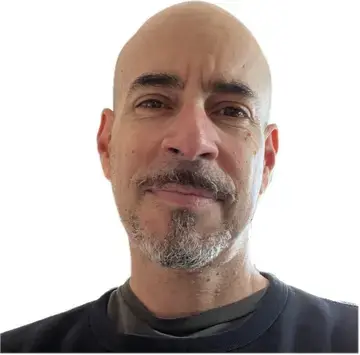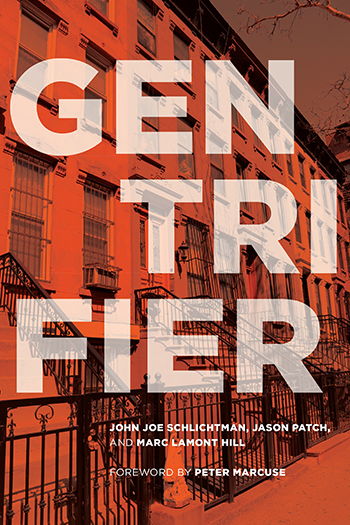Jason Patch

Education
B.A. Arizona State University M.A.,
Ph.D. in Sociology, New York University, September 2005
Research Statement
Jason Patch is a professor of sociology at Roger Williams University. His interests include neighborhood change, art, fashion, food, and qualitative methodology. He is a co-author of the book Gentrifier. Recently he co-authored the article, "Coffee + COVID: people, place, and pandemic." His current research focuses on food and city life.
Six Word Statement
“Let’s explore cities, fashion, and food together”
Gentrification

From the book description for Gentrifier (2017):
“As urban job prospects change to reflect a more ‘creative’ economy and the desire for a particular form of ‘urban living’ continues to grow, so too does the migration of young people to cities. Gentrification and gentrifiers are often understood as ‘dirty’ words, ideas discussed at a veiled distance. Gentrifiers, in particular, are usually a ‘they.’ Gentrifier demystifies the idea of gentrification by opening a conversation that links the theoretical and the grassroots, spanning the literature of urban sociology, geography, planning, policy, and more. Along with established research, new analytical tools, and contemporary anecdotes, John Joe Schlichtman, Jason Patch, and Marc Lamont Hill place their personal experiences as urbanists, academics, parents, and spouses at the centre of analysis. They expose raw conversations usually reserved for the privacy of people’s intimate social networks in order to complicate our understanding of the individual decisions behind urban living and the displacement of low-income residents. The authors’ accounts of living in New York City, San Diego, Chicago, Philadelphia, and Providence link economic, political, and sociocultural factors to challenge the readers’ current understanding of gentrification and their own roles within their neighbourhoods.”
His earlier gentrification work examines the neighborhood of Williamsburg, Brooklyn. As a process gentrification exists at the nexus between reinvestment and long-term urban communities. New residents in this gentrifying neighborhood depend on many of the same features found in traditional neighborhoods: public characters and eyes on the street. The difference with gentrification is that new business owners, especially women entrepreneurs, act as what I term faces on the street. These new public characters, and the sites of consumption they run, increase the circulation of new residents throughout this heavily industrial neighborhood and act as conduits of information. At the same time, they are embedded in the industrial and ethnic aesthetics of the existing space.
Streetfood Vendors
This is a renewed project on food vendors. Originally conceived for vendors in New York City, this project is now focused on vending in Providence, RI. Much has been written about food vendors in developing countries, as recipients of micro-enterprise funding and as employment sites for low-income women. How do local vendors relate or differ from their international counterparts? Food vendors also have a long, complicated history in the United States. At various times, they have been the target of political campaigns and putative regulations. How do vendors handle local regulations? Vending is a key component of daily street life in some communities. Vendors act as a nexus point for food, health, street life, the informal and temporary economies, and immigration. Vendors originate from multiple countries. Food vending is an entry level job for many new immigrants, but may become permanent labor. How do vendors establish their businesses and maintain themselves? As with many businesses, food vendors provide eyes on the street, and establish themselves as important types of public characters. How do vendors interact with their neighbors, and what type of extra-commercial benefits do vendors provide?
Hurricane Katrina and Graffiti
This project exams over 500 pieces of graffiti created in the greater New Orleans region in response to Hurricane Katrina. Disasters are defined by trauma. The survivors of a disaster need a means to convey their emotions, respond to political decisions, and clarify their status as survivors. In the wake of Hurricane Katrina and the political and infrastructural failures associated with it, residents of the Gulf Coast were limited in their ability to broadly and unilaterally express themselves free of news media or governmental filters. Graffiti offered one starkly visible technique to externalize the emotions and political responses felt by the survivors of Hurricane Katrina. The content of this graffiti reflects local humor, castigates political and civic leaders, and memorializes victims in language and symbols distinct to the inhabitants and their locale.
Publications
Patch, Jason, Amberjean Heeks, Kristen Luppino, Mikala Nims, Molly Ortiz, Keryn Presutti, and Chelsea Reid. 2021. “Coffee COVID: People, Place, and Pandemic.” Visual Studies, no. Journal Article, 1–6.
Schlichtman, John Joe, Marc Lamont Hill, and Jason Patch. 2017. Gentrifier. UTP Insights, Book, Whole. Toronto; University of Toronto Press.
Patch, Jason. 2008. “Ladies and Gentrification: New Stores, Residents, and Relationships in Neighborhood Change.” In Gender in an Urban World, edited by J. Desena, 9:103–26. Research in Urban Sociology. Emerald.
Schlichtman, John Joe, and Jason Patch. 2008. “Contextualizing Impressions of Neighborhood Change: Linking Business Directories to Ethnography.” City & Community 7 (3): 273–93.
Patch, Jason. 2004. “The Embedded Landscape of Gentrification.” Visual Studies 19 (2): 169–86.
Patch, Jason. 2002. “Hey Ho! Graduate Student Employees Unionize at New York University.” Humanity & Society 26 (1): 69–76..
Presentations and Media Interviews:
Urban Affairs Association Spring 2009
"Externalizing the Emotion: Graffiti Responses to Hurricane Katrina"
Eastern Sociological Society Spring 2007
"Contextualizing Impressions of Neighborhood Change: Linking Business Directories to Ethnography"
Interviewed for the documentary Bowery Dish: Gentrification Happens..., Logical Chaos, Inc. 2004, http://www.bowerydish.com"
Interviewed about graduate student union drive, "NYU Grad Student Union", All Things Considered, National Public Radio, April 24, 2000.
Interviewed about graduate student union drive, "NLRB Ruling May Demolish the Barriers to T.A. Unions at Private Universities", The Chronicle of Higher Education, April 14, 2000
Courses
- ANSOC.105: Introduction to Sociology
- ANSOC.245: Sociology of Disasters
- ANSOC.300: Qualitative Methods
- ANSOC.335.01: Social Worlds of Fashion & Art
- ANSOC.365: Cities & Society
- ANSOC.379/FS.379: SpTp: Food and Society
Professional Service
RWU Human Subjects Review Board, Board member
2008 – present
RWU Hillel, Faculty advisor
2019 – present
The Journal for Undergraduate Ethnography (undergraduateethnography.org),
Founding Editor-in-chief and Board Member,
2010 – 2015 (Editor-in-Chief); 2015 – present (Board member)